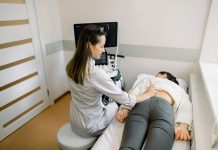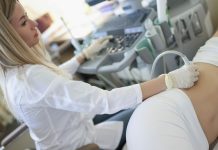
In a new study, researchers found how COVID-19 can be detected via a non-invasive breath test, providing almost instant results.
They were able to identify candidate biomarkers present in the breath of someone affected by COVID-19.
They demonstrated how these markers or “breath signatures” can be used to rapidly distinguish COVID-19 from other respiratory conditions at a point of need, such as an emergency department, a workplace, or a care setting, with no laboratory support.
The research was conducted by a team at Loughborough University and elsewhere.
In the study, the team tested 98 patients, of whom 31 had COVID-19. Other diagnoses included asthma, exacerbation of asthma and COPD, viral pneumonia, other respiratory tract infections, and cardiac conditions.
To identify and diagnose COVID-19 from the samples, the team used Gas Chromatography (GC), an analytical technique used to separate and identify ionized molecules in the gas phase.
Participants gave a single breath-sample forvolatile organic compounds analysis by GC-IMS.
This analysis found aldehydes (ethanal, octanal), ketones (acetone, butanone), and methanol that discriminated COVID-19 from other conditions.
The finding suggests that COVID-19 may be rapidly distinguished from other respiratory conditions.
The team says to develop this technique further larger studies are required, together with complementary GC-MS studies, to build on the data collected so far.
If shown to be reliable, it offers the possibility for rapid identification or exclusion of COVID-19 in emergency departments or primary care that will protect healthcare staff, improve the management of patients and reduce the spread of COVID-19.
One author of the study is Paul Thomas, Professor of Analytical Science.
The study is published in The Lancet’s EClinicalMedicine.
Copyright © 2020 Knowridge Science Report. All rights reserved.



